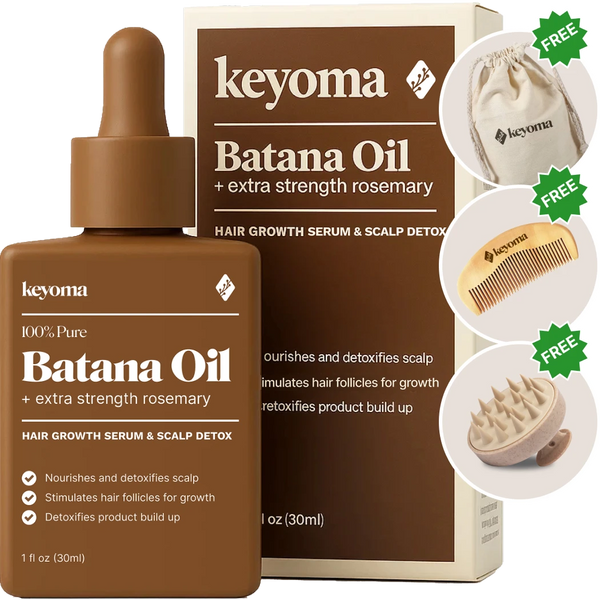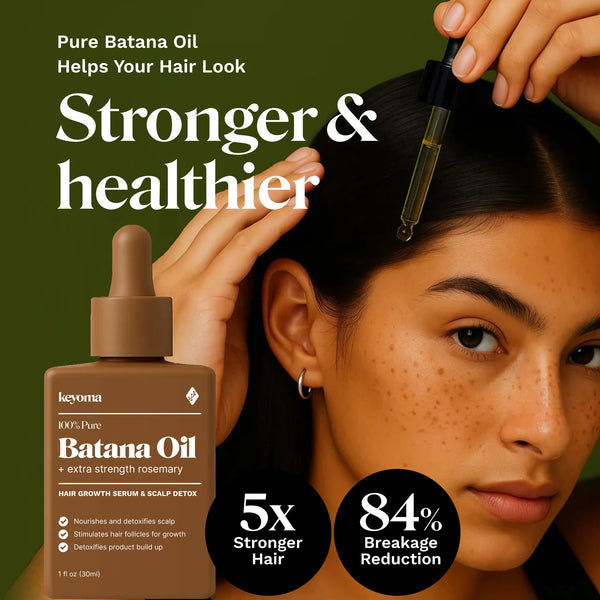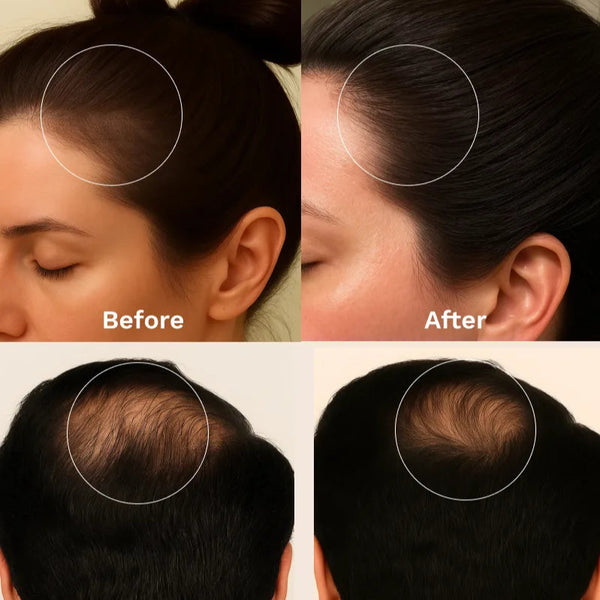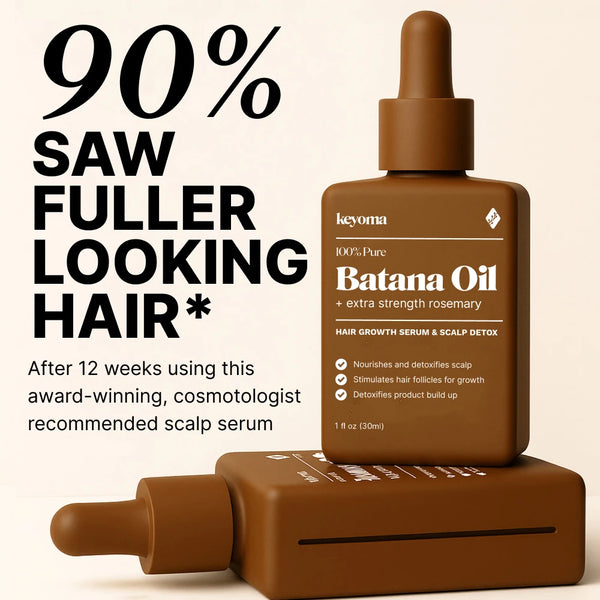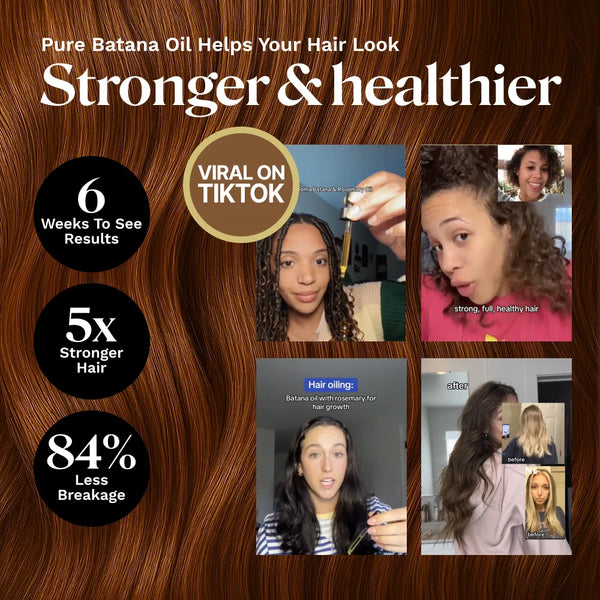Hormonal Hair Loss After Childbirth: What’s Normal, What Helps, and When to Get Care
Published on

In this article
If you notice more strands on your pillow or in the shower a few months after delivery, you are not alone. Hormonal hair loss after childbirth can feel unsettling, yet it is usually a normal, short-term shift called postpartum shedding. Your hair cycle is responding to changing hormones, not failing for good.
Find out what is happening, why it occurs, how to care for your scalp and strands, and when to check in with a clinician. You will also find answers to common questions like what hormone causes postpartum hair loss and how long hair loss lasts after pregnancy.
Key Takeaways
-
Hair shedding after child birth is a temporary telogen effluvium from changing hormone levels.
-
Shedding starts two to four months postpartum, improves by six, normalizing by twelve.
-
Estrogen drop drives shedding, thyroid changes, low iron, and stress can also contribute.
-
Gentle washing, conditioning, loose styles, and scalp massage help comfort during regrowth.
Why Do Women Start Shedding After Childbirth
During pregnancy, high estrogen and progesterone often extend the growth (anagen) phase of the hair cycle. Many people see fuller, shinier hair because fewer strands enter the shedding (telogen) phase.
After childbirth, those hormone levels fall. That change nudges a larger share of hairs into telogen at once. The result is a brief surge in shedding called telogen effluvium. This is the simple answer to what causes hair loss after pregnancy, a normal reset of growth as hormones shift.
If you have wondered what hormone causes postpartum hair loss, estrogen sits at the center. Estrogen rises during pregnancy and then drops after delivery. Thyroid hormones can also fluctuate after you give birth. Some people develop postpartum thyroiditis, which can contribute to shedding and symptoms like fatigue or heart palpitations.
When Does Hair Shedding Starts and Ends
Most people notice shedding ramp up between two and four months after delivery. It can feel like clumps at the drain or a sudden thinning at the temples and hairline. The timing matches your hair’s shift into telogen and the natural lag before those hairs are released.
So how long does hair loss last after pregnancy? In most cases, shedding eases by about six months and keeps trending down over the first year
By 12 months postpartum, most people see their baseline density returning as new hairs enter the growth phase. The American Academy of Dermatology notes that postpartum shedding is expected and temporary and that hair tends to regrow on its own over time.
If you are still shedding heavily beyond a year, or if you see patchy loss or scarring, schedule an appointment with a dermatologist to rule out other causes like alopecia areata or scarring alopecias.
What “Excessive” Looks Like vs. What Is Still Normal
A little context helps. On a typical day, shedding 50 to 100 hairs is considered normal. The AAD explains normal daily shedding and what “excessive shedding” means when more hairs than usual move into telogen.
After childbirth, the number can be higher for a short window. That jump alone does not mean you are losing hair permanently.
You might see the most thinning near your hairline. Baby hairs along the temples are common as regrowth starts. The texture of these new hairs can feel different at first, then blend in over time.
Breastfeeding, Weaning, and Shedding: What to Expect
People often ask about excessive hair loss after stopping breastfeeding. Breastfeeding itself keeps estrogen on the lower side, which can influence the growth cycle. Some notice a fresh wave of shedding when they wean.
That timing reflects another hormonal shift, not harm to the follicles. If you notice excessive hair loss after stopping breastfeeding, look at the big picture, stress, sleep, iron status, thyroid health, and overall nutrition all play a role in how your hair behaves in this period.
Practical Haircare Steps to Help While You Shed

You cannot stop normal postpartum shedding, but you can reduce breakage, soothe your scalp, and make hair look fuller while it regrows. Follow the simple steps you can take below.
Wash Gently and Consistently
Choose a mild shampoo and adjust frequency to your scalp. If your scalp feels oily fast, wash more often. If it feels tight or dry, add spacing between washes or switch to a more hydrating formula.
Rinse with lukewarm water, not hot, and use your fingertips (not nails) to massage the scalp for 60–90 seconds. If you use a lot of stylers, a clarifying shampoo once every 2–4 weeks can remove buildup without over-stripping when followed by conditioner.
Condition with Slip
Focus conditioner from mid-lengths to ends to reduce tangles. A wide-tooth comb in the shower helps distribute product and avoid pulling. For extra slip, emulsify a small amount of conditioner with water in your palms before applying, then detangle from the ends up in sections. Let it sit for 2–3 minutes, then rinse until the hair feels smooth but not coated.
Limit Heat
Air-dry when you can. If you use a dryer, use a diffuser on low to medium and add a heat protectant to limit extra stress on fragile regrowth. Let hair air-dry 60–70% before blow-drying, keep the nozzle 6–8 inches from the scalp, and finish with a cool shot to set.
If you use irons, aim for the lowest effective setting (about 300–350°F / 149–177°C) and limit to one or two passes.
Try a Lightweight Leave-In
A small amount can make hair look smoother without flattening volume. Start with a pea to nickel-size amount depending on length and density, focusing on mid-lengths and ends. Look for lightweight hydrators like glycerin or panthenol. If your roots feel flat, a small amount of mousse or foam at the crown can add lift.
Be Gentle at The Hairline
Swap tight ponytails and heavy clips for looser styles that do not tug. Protective styles are helpful when installed and maintained in a way that avoids tension. Rotate your part, use fabric-covered scrunchies, and avoid leaving edge-control gels on for days at a time to lower the risk of traction at the temples.
Massage The Scalp
Gentle daily massage can boost comfort and bring a sense of calm. It will not change hormone timing, but it can support a healthy scalp environment. Try 3–5 minutes of circular motions with light pressure using your fingertips or a soft silicone scalp brush. Skip oils if you are prone to flaking or irritation, and avoid vigorous rubbing on wet hair.
Keep up with sleep and hydration as you can
Small, steady care adds up when your schedule is full. Keep a water bottle nearby during feeds, and aim for regular protein- and iron-rich snacks (yogurt, eggs, lentils, beans, tuna or sardines, pumpkin seeds) to support growth. Even short rest breaks help with stress, which can influence shedding.
FAQs
What causes hair loss after childbirth?
The growth cycle reset is the simple reason. High pregnancy hormones kept more hairs in the growth phase. After delivery, those levels fall, and more hairs enter the shedding phase. This temporary shift, called telogen effluvium, explains why you see increased shedding several weeks after birth.
How long does hair loss last after childbirth?
Most people see the heaviest shedding between two and four months postpartum and improvement by six months. Many reach their baseline again by 12 months. If shedding stays heavy or you see patchy loss, check in with a dermatologist.
Is excessive hair loss after childbirth permanent?
No, not when it is typical postpartum telogen effluvium. It is temporary and improves as your growth cycle resets. If shedding feels severe or you see scalp symptoms, seek evaluation to rule out other causes.
Follow Gentle Care and Track Regrowth With Keyoma
Hormonal hair loss after pregnancy often starts a couple of months after delivery, peaks for a short time, and then eases on its own. The cause is simple, a shift in hormones that resets your hair cycle.
While it runs its course, focus on gentle care, balanced meals, and stress reduction where you can. Reach out for medical support if you see patchy loss, scalp symptoms, or shedding that does not improve over time. You do not need to do everything at once. A few steady changes make daily care easier while your hair grows back.
Featured Product
100% Pure Batana Oil + Rosemary
↓Best Batana Oil to Buy↓
1 Month
Subscribe & Save
- 30-day supply delivered monthly $35
- 30% off for life $6
- Free haircare essentials kit $33
- Free custom wooden comb $10
- Free scalp massager $15
- Free eco-friendly travel bag $8
- 30-Day Money Back Guarantee
- Free Shipping
- Online portal for easy cancel, skip, or pause.
1 Month One Time Purchase
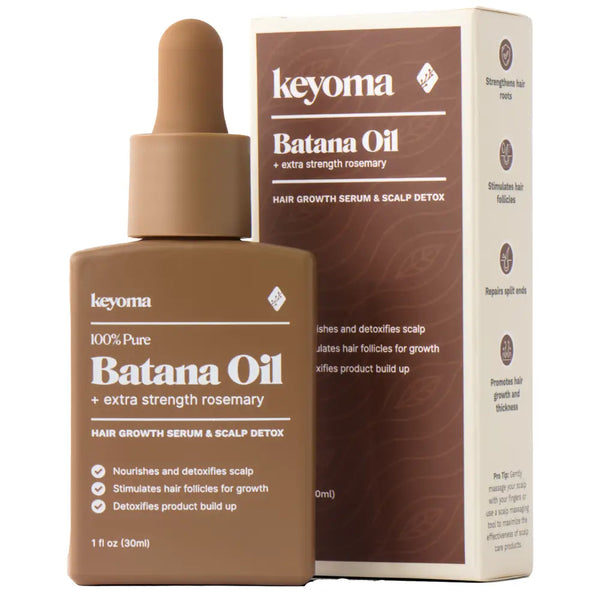
- 30-day supply $50
- 30% off for life $6
- Free haircare essentials kit $33
- Free custom wooden comb $10
- Free scalp massager $15
- Free eco-friendly travel bag $8


